ABS and EBD: What are they, and what is the difference
Published On 14/4/2025, 6:47:58 am Author Gaurav CyrilWhen you look at a car's specifications, you'll often see "ABS with EBD" listed as a standard safety feature. These systems are now mandatory in most countries because they prevent countless accidents every day. But what exactly do they do? Let's understand.
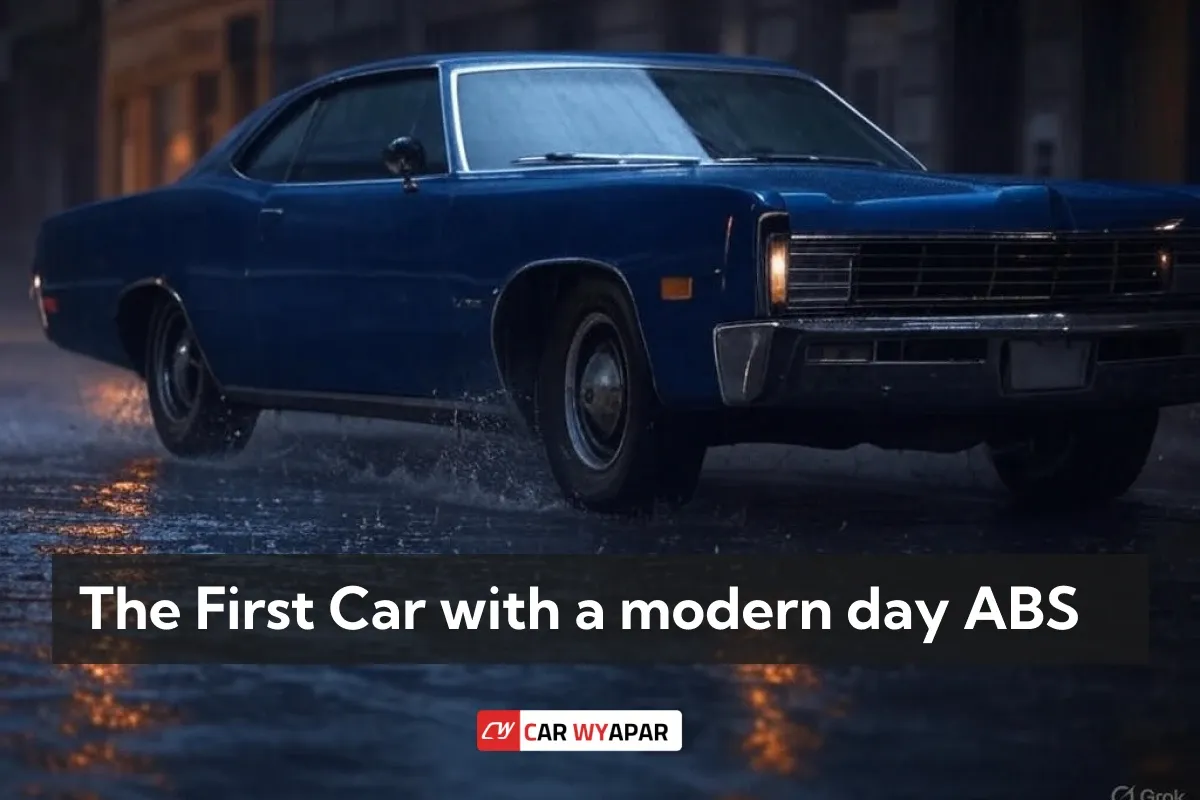
Back in 1908, engineer J.E. Francis was trying to solve a dangerous problem: when trains braked too hard, their massive wheels would lock up and slide uncontrollably on the tracks. His "Slip Prevention Regulator" was the very first attempt at what we now call ABS. Then in 1920, aviation pioneer Gabriel Voisin created a clever flywheel system for airplanes that automatically reduced brake pressure when wheels started to lock, preventing blown tires during rough landings.
What we now know as ABS actually began life solving problems for trains and airplanes - vehicles where controlled braking was literally a matter of life and death. But as cars became mainstream in the mid-20th century, a new braking crisis emerged. With more vehicles hitting higher speeds on expanding highway systems, drivers needed that same anti-lock protection on wet roads and during panic stops. The technology that had kept massive locomotives and aircraft under control was about to make its most important leap yet - into the family sedan.
The journey of ABS from trains and airplanes to automobiles involved several automotive pioneers. In the 1950s, companies like Dunlop and Maxaret experimented with mechanical anti-lock systems for cars, but they were too bulky and expensive for mass production. Then, in the 1960s, Ford and General Motors tested early electronic versions, though these were still not refined enough for everyday drivers.
The real breakthrough came in 1971 when Chrysler, in partnership with Bendix Corporation, introduced the first fully electronic, computerized ABS in the Imperial and named it "Sure Brake." Unlike earlier attempts, Chrysler's system used wheel-speed sensors, a digital controller, and hydraulic valves to modulate brake pressure—the same fundamental principles used in ABS today. This was revolutionary because it worked automatically, reacting faster than any driver could to prevent wheel lockup.
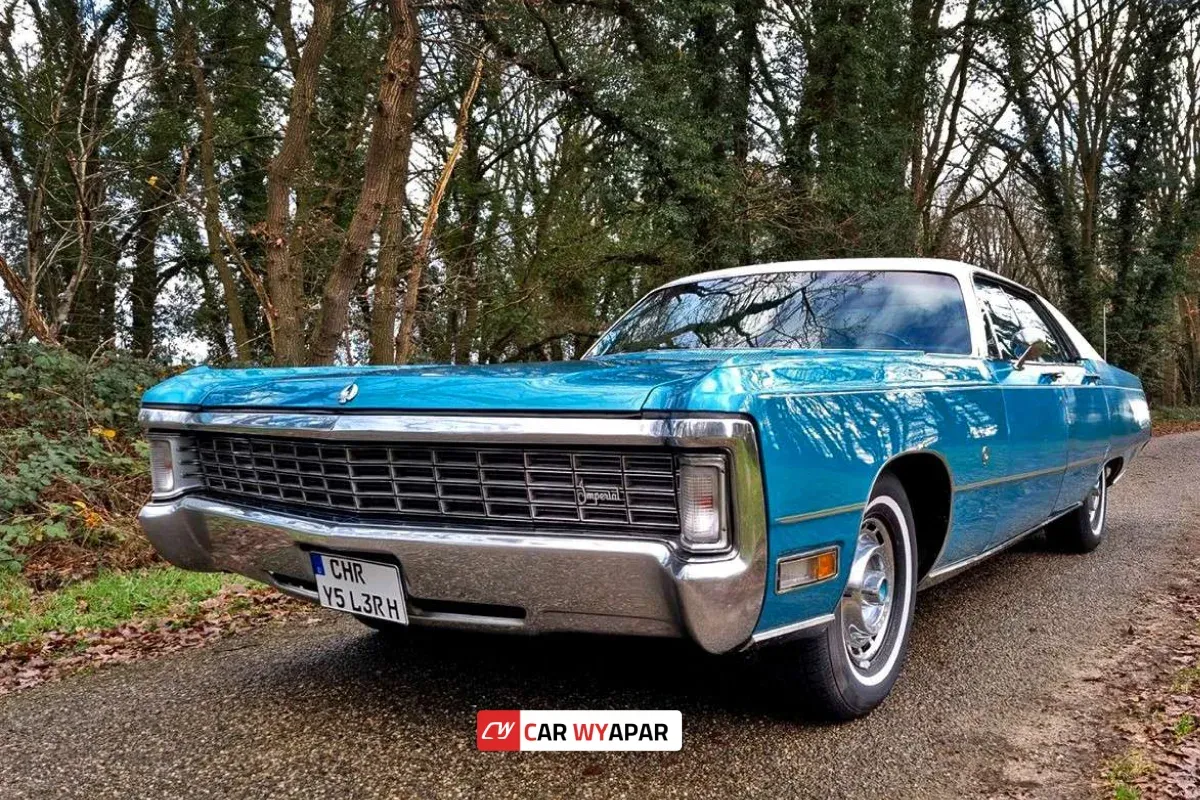
While previous systems relied on mechanical parts, Chrysler's used microprocessors for instant, accurate braking adjustments. The technology was compact enough to fit consumer vehicles. Chrysler's innovation set the standard. By the 1980s, Bosch, Mercedes-Benz, and BMW refined ABS further, making it smoother and more reliable. Today, every modern car uses a descendant of that 1971 system.
How does an ABS Work
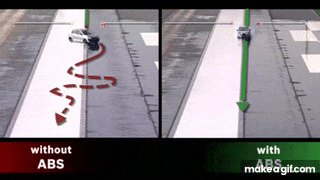
Imagine you're driving on a rainy road when suddenly, a dog runs in front of your car. You slam the brakes—but instead of stopping, your wheels lock up, and your car starts sliding uncontrollably. Why? Because when wheels stop turning completely, they lose grip and turn your car into a heavy sled on ice!
In a panic, our instincts tell us to stomp the brake pedal and hold it down—exactly the wrong thing to do! The smart (but difficult) way to stop safely is to pump the brakes—press, release, press, release—to prevent wheel lockup. But here's the problem:
- In an emergency, drivers panic and freeze, forgetting to pump.
- Even if you remember, you can't brake 15 times per second like ABS can!
Your car's Anti-lock Braking System (ABS) springs into action like a superhero when you need it most. Here's the magic behind it: Tiny speed sensors near each wheel act as vigilant guards, constantly monitoring if any wheel is about to lock up. The moment one wheel slows down too abruptly compared to the others, the ABS computer - your car's lightning-fast brain - jumps in and momentarily reduces brake pressure to that wheel, as if lifting your foot off the pedal for just a split second. But here's the incredible part: this system can pump the brakes up to 15 times per second, far quicker than any human could ever manage.
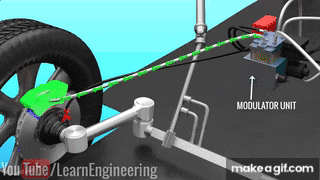
Here's the truth your panic-stricken brain doesn't want to hear: when you slam the brakes with all your might in an emergency, you're not actually stopping the car - you're creating the perfect conditions for a dangerous skid.
That white-knuckle death grip on the brake pedal? It's just your primitive fight-or-flight response taking over, convincing you that more pressure equals more stopping power. But this instinct is a complete lie.
The real hero is your ABS, working silently to undo your panicked mistakes. While you're frozen in terror, stomping the pedal like your life depends on it, the system is actually reducing your excessive brake pressure up to 15 times per second.
The bitter irony? The harder you brake, the more the system has to work against you. Your car stops safely not because of your panicked stomping, but despite it. ABS is the calm, calculated engineer fixing what your terrified lizard brain keeps breaking.
What is ABS with EBD then?
When you're checking out a car's specs and see "ABS with EBD", here's what that really means: While ABS prevents wheel lock-up during hard braking, Electronic Brakeforce Distribution (EBD) is its smarter sibling that decides exactly how much braking force each wheel needs.
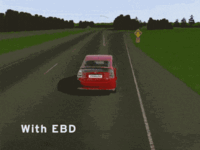 Imagine you're taking a sharp turn too fast, and suddenly need to brake hard. Here's what happens:
Imagine you're taking a sharp turn too fast, and suddenly need to brake hard. Here's what happens:
- Your outer wheels (especially the front outer one) bear more weight due to momentum
- Your inner wheels have less grip as the car leans outward
Without EBD, ABS would apply equal brake pulses to all wheels - which could make you lose control due to centrifugal force.
The story of Electronic Brakeforce Distribution (EBD) begins in the late 1980s, when automakers realized ABS needed an intelligent partner. While ABS prevented wheel lockup, engineers at Bosch and Mercedes-Benz noticed a critical flaw - it applied equal braking force to all wheels, ignoring real-world weight shifts during cornering, acceleration, or when carrying heavy loads.
Mercedes-Benz pioneered the solution in 1989 with the W140 S-Class, introducing the first system that could dynamically adjust braking force between wheels using existing ABS sensors combined with new computer algorithms that monitored speed, weight distribution, and driving conditions. This innovation was quickly refined throughout the 1990s, with Japanese automakers like Toyota and Honda adding capabilities to account for steering input and load variations. By the time Volvo branded the technology as "EBD" on their 1998 S80, the system had proven its ability to reduce stopping distances by 10% and prevent nearly half of potential skids during emergency maneuvers. What began as a premium feature on luxury sedans rapidly became standard equipment as regulators and consumers recognized EBD's ability to automatically compensate for real-world variables like sharp turns, heavy cargo, or worn brakes - making every stop safer without any extra effort from the driver. Today, this invisible co-pilot works silently whenever you brake, representing one of the most significant - yet often overlooked - advancements in automotive control systems.
That subtle "with EBD" in your car's specs? It's what keeps you planted on the road when both braking and steering matter most. Next time you brake hard in a curve, thank EBD for making you look like a better driver than you actually are!
Pro Tip: You'll feel EBD+ABS working together when emergency braking - the pedal pulses while the car stays remarkably stable, even if you're mid-turn. That's electronic intelligence overriding physics!
















